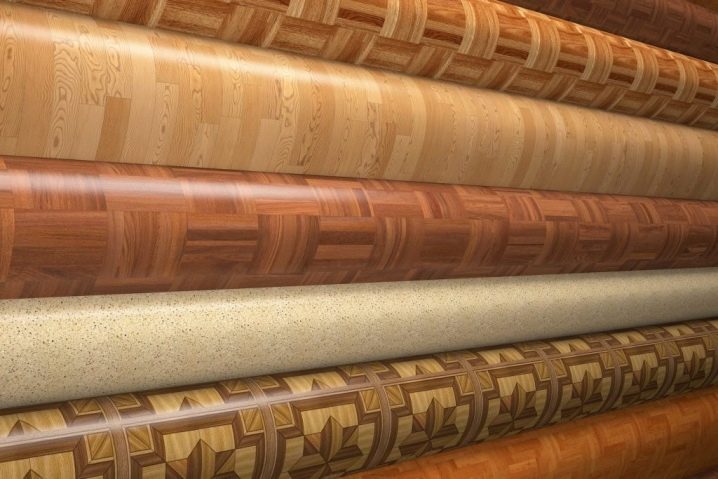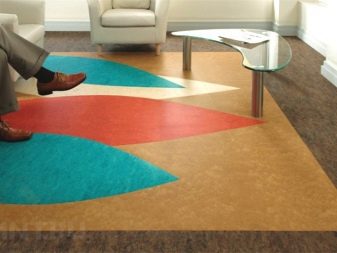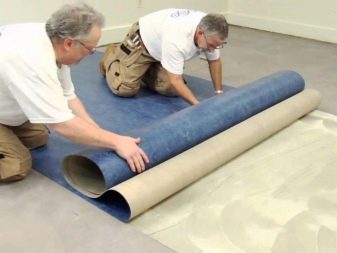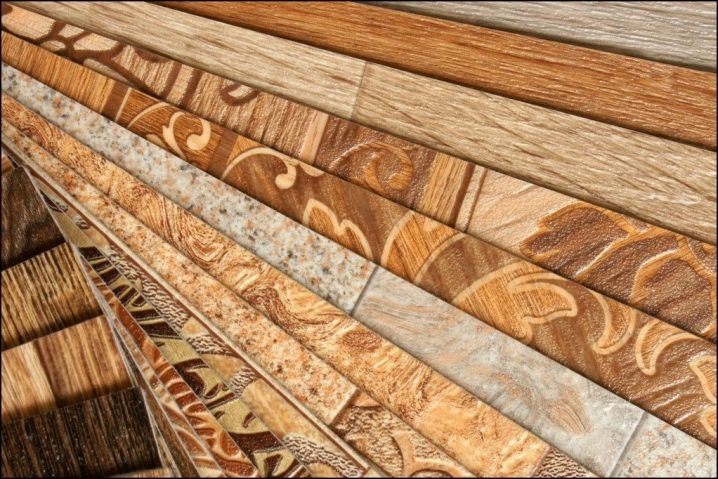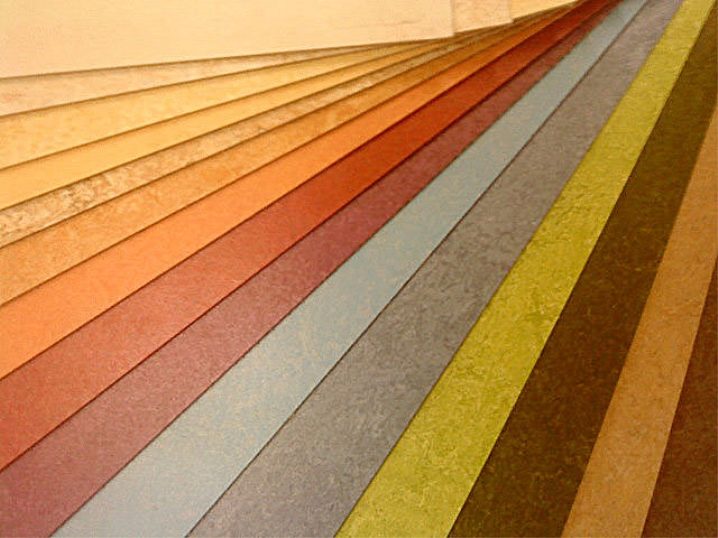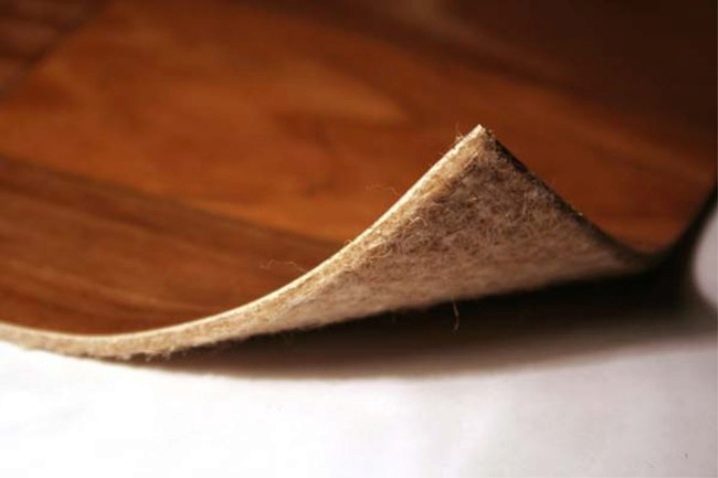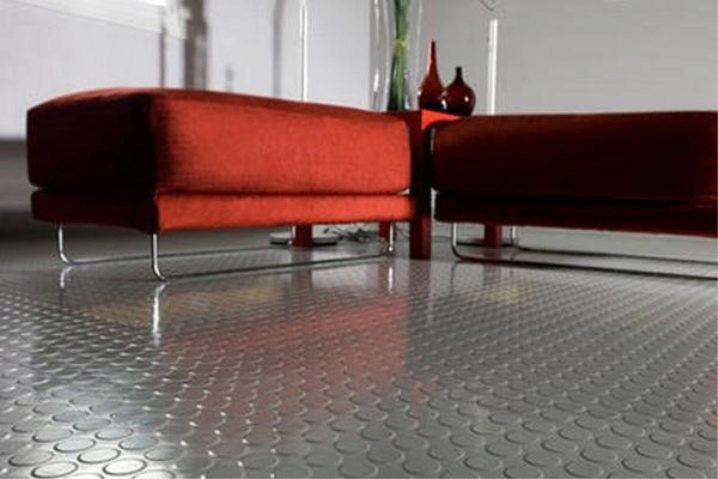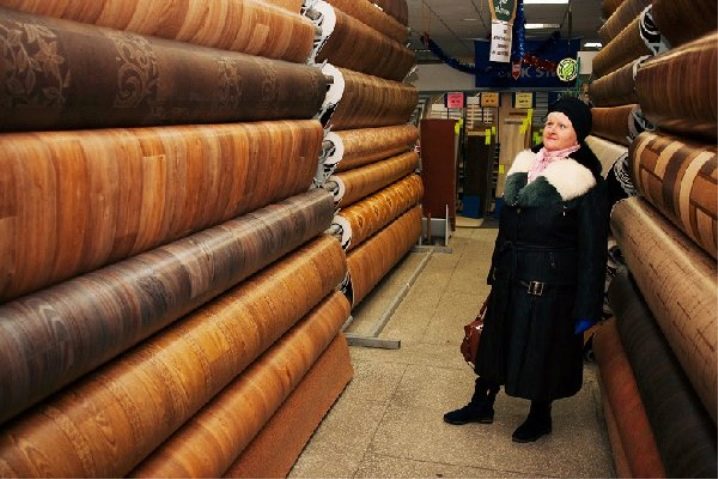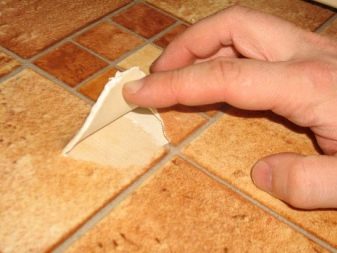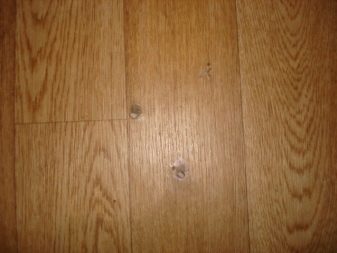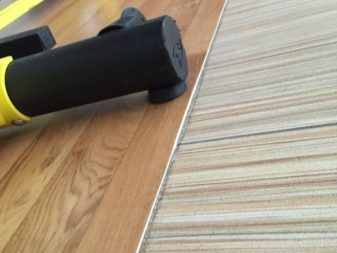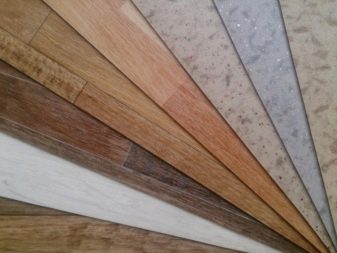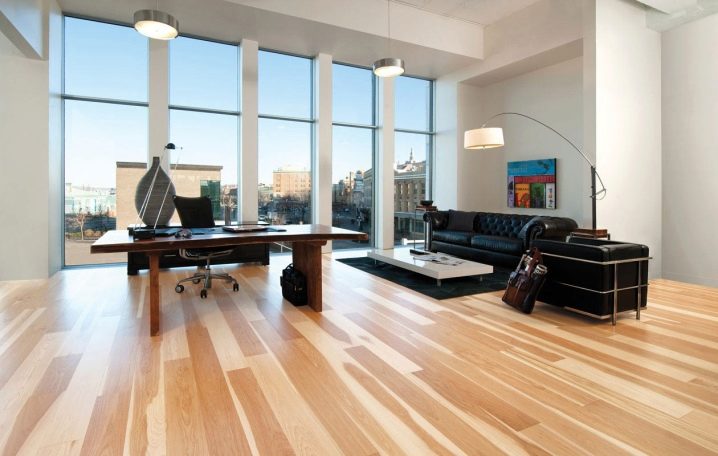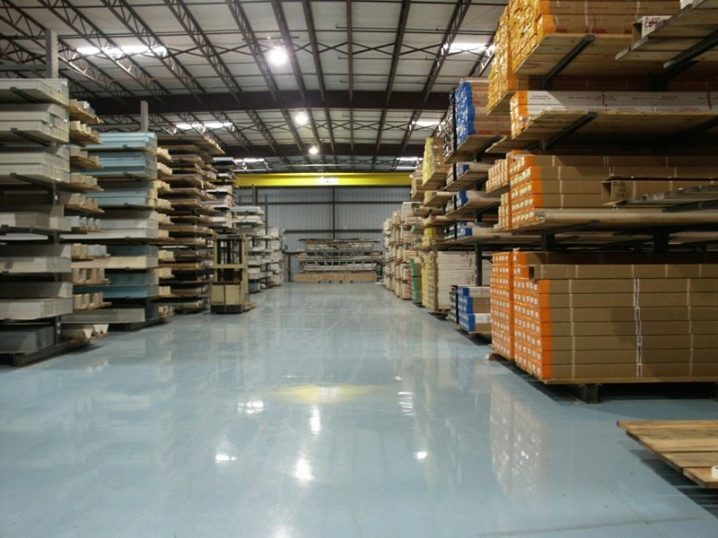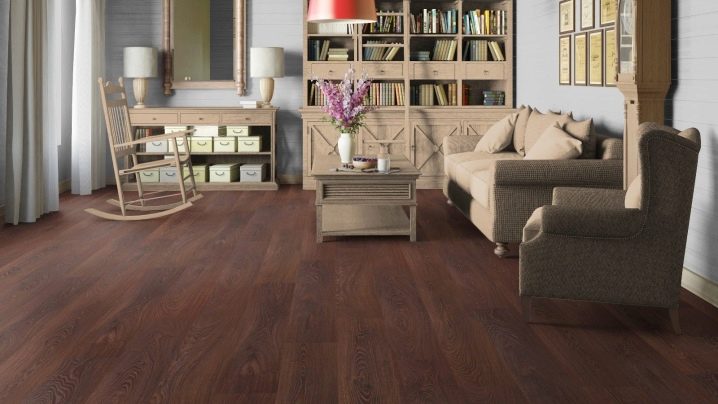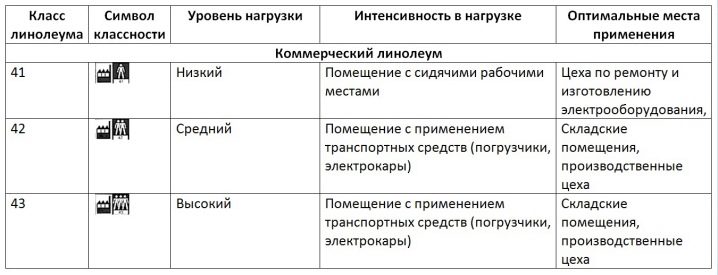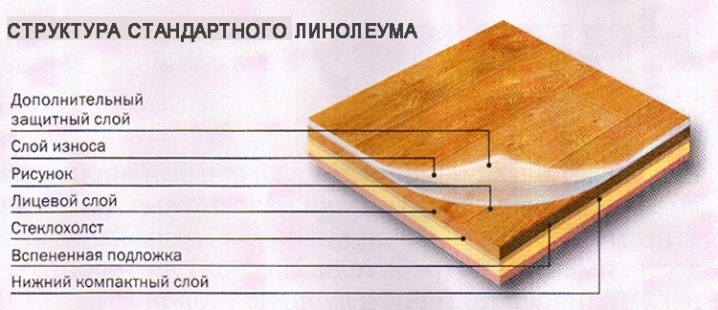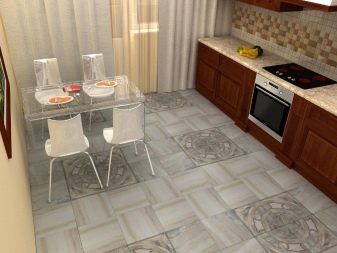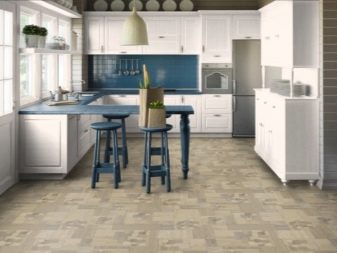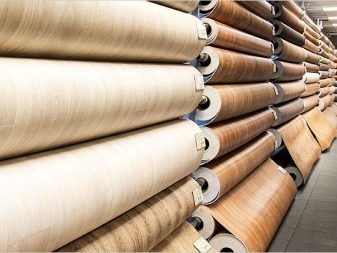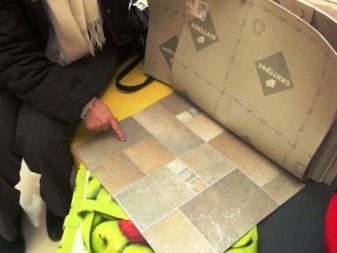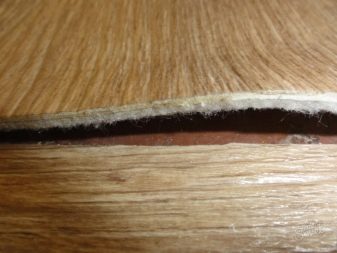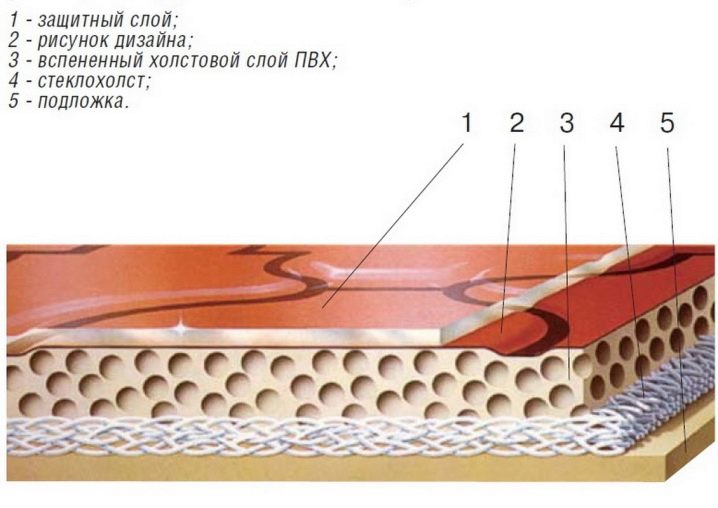What are the classes of linoleum and what do they mean?
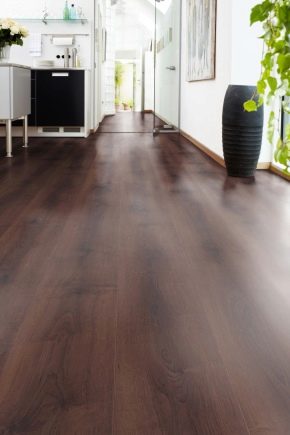
The modern market of materials for construction and decoration is represented by a large variety of flooring. Linoleum compares favorably with the rest at an affordable price, ease of installation, unpretentious care and a rich assortment of colors and patterns for rooms of various purposes. Practicality and durability - these are the main advantages of linoleum. Thanks to modern production technologies, linoleum can outwardly look like a floorboard, laminate and ceramic tiles. Even the most capricious buyer will be able to make their choice.
Kinds
Being engaged in repair, you should be very serious about the choice of flooring. If you are staying on linoleum, you should know that there are several types of linoleum, different in characteristics depending on the purpose of the room in which it will be used. Increasingly, linoleum is chosen not only when repairing apartments, but also when finishing office, industrial, and public facilities. In order not to get confused in the wide variety of types of this flooring, each of them should be considered in more detail.
Taking the materials from which the linoleum is made, we can designate several types:
- Natural linoleum. In the manufacture of such a coating using a maximum of natural materials and a minimum of synthetic components (resins, wood flour, limestone, linseed oil and others). This linoleum is particularly durable, resistant to fading, able to withstand a significant load, wear-resistant, but at the same time has a relatively high cost due to environmentally friendly components in its composition.
- PVC linoleum (polyvinyl chloride). This type is the most popular among buyers, as it is characterized by an affordable price, a wide range of colors, high elasticity and safety. According to the structure, it can be single-layered or multi-layered, due to which its technical characteristics are enhanced. At the base - foamed vinyl, woven or non-woven material. Among the minuses of this type, shrinkage and unpleasant odor can be identified at the beginning of the service life.
- Nitrocellulose linoleum. The range of such coatings are monochromatic and colored products that imitate the structure of a stone (for example, marble). Among the advantages we can single out the wear resistance, high strength, long service life, rich appearance. However, a significant drawback is the fire hazard of such a coating, which is why it is not very popular among consumers.
- Alkyd linoleum. It is produced from a modified resin with the addition of inorganic fillers. To obtain a diverse color palette, manufacturers add various pigments to the composition. Linoleum from such material favorably differs in high sound insulation, low heat conductivity, durability and easy care.Among the disadvantages there is a special, complex technology of laying this coating.
- Rubber linoleum (relin). This type of coating is often found in the premises of industrial buildings and public institutions. The composition contains synthetic rubber, which emits an unpleasant odor during use, which is a significant drawback of this type. Among the advantages are water-repellent properties and high elasticity.
Specifications
Each buyer, having come to the shop of finishing materials, seeks to purchase flooring that is distinguished by high quality and long service life. In order to avoid problems throughout the life of the linoleum, it is necessary to study its main characteristics in advance.
The first thing you should pay attention to is the strength of the product. The flooring material must be resistant to damage of various kinds. The higher the load, the more durable the linoleum should be. The most durable coating is recommended to be laid in educational institutions and health care, offices and shopping centers with medium traffic and the use of mobile furniture type (chairs and tables on wheels, mobile pedestals and carts).The defining characteristic is the strength of linoleum on the transverse gap. Choosing a canvas, you have the right to bend its edges, to crush corners, to make a serif with your fingernail - if the upper layer is not deformed, it means that the canvas, indeed, has high strength and excellent quality.
The next important characteristic is fire hazard. When choosing linoleum, pay attention to two parameters: combustibility (the ability of materials from the composition to ignite and sustain combustion) and smoke formation (visual density of the smoke screen when ignited). Flammability is represented by a scale from 1 to 4, where 1 is the most fireproof type. Smoke is also measured by a scale from 1 to 3, where 1 is the lowest smoke density.
Also, when determining the fire hazard of linoleum, it is worth exploring such properties as flammability (hard to ignite, moderately flammable and easily flammable) and toxicity of combustion products. Pay attention to these factors, especially when the floor is selected for objects with a large number of people: offices, industrial and public institutions, children's institutions.But even if you choose linoleum for your own apartment, you should remember about your safety.
Another characteristic feature is the thickness of the product. According to this type of linoleum can be classified into two types: homogeneous and heterogeneous. The first type is distinguished by a homogeneous structure, and its drawing is applied to the whole mass. Such an application maintains a bright decorative appearance, is not subject to fading over the entire period of operation. Another type has not one layer, but several layers, due to which the strength and elasticity of the floor covering significantly increase.
In heterogeneous models, felt or jute is used as a base and as a layer. They provide thermal and noise insulation, which adds maximum comfort to the room. The thickness of the linoleum can vary, it depends on the place where this or that type of coating will be used: for residential premises it is best to choose linoleum with a thickness of 1-3 mm, for offices - 3-5 mm, and at production sites - from 6 mm and above . It is considered the thickness of the upper layer only, on which the drawing is applied and directly with which direct contact occurs during operation.
Purpose
Types of linoleum can be divided by purpose, respectively, are used in different areas, each of which imposes a certain number of requirements to a particular type of canvas. To determine which type of linoleum can be used in each specific application, the following characteristics will help.
- For home. Linoleum for the house has an optimal value and a wide range of colors. The thickness of the canvas for residential premises is insignificant, but they do not contain toxic substances that can harm human health.
- Office. Office linoleum more durable, however, the range of ornaments less rich. Basically, this is a strict style for laminate, tile or floorboard. Coverage for office-type premises is characterized by increased thickness and durability.
- Industrial. Industrial linoleum is the most durable, it is able to withstand heavy loads, the effects of heavy loads and moving vehicles.
Classiness
If you want the flooring to serve as long as possible and always preserve an excellent decorative look, you must correctly select the class of linoleum.Let us consider in more detail what classes are, how they differ, what they mean and how to choose the necessary class for different rooms.
The classification of linoleum is based on two fundamental characteristics: wear resistance and abrasion.
Wear resistance
This is the ability of the coating to withstand frequent mechanical stress and stress. How linoleum withstands the pressure of large-sized objects, the movement of furniture, frequent walking, without losing its presentable appearance, determines the degree of its durability. Classification of durability is based on the European system EN685, which is a two-digit numeric code (type of room and degree of load). Let's try to figure it out.
The first number indicates the functional purpose of the room.where it is supposed to use one or another type of flooring:
- 2 - residential premises of a private type (apartment, private house, cottage);
- 3 - premises of commercial, office and public types (children's educational institutions, polyclinics, offices and salons of shops);
- 4 - industrial buildings and premises (factory workers, stations, airports).
The second number indicates the degree of load, it varies from 1 to 4, where, respectively, 1 is a small load, 4 is the highest one.
Thus, by distinguishing the classes of linoleum, one can easily determine what load it is designed for and where it can be used. Let us examine in detail each subgroup.
Going for the choice of coverage for private housing, we will meet three markings:
- "21" - this type of linoleum is suitable for a bedroom, a study or another room with a small cross.
- "22" - the degree of intensity of the load in this case is much higher, so the linoleum with such marking can be laid in the living room or children's room.
- “23” is a flooring that is most often used in residential premises where constant movement and high load occur: corridors, hallways, kitchens.
The following subgroup of floor coverings is mainly intended for semi-commercial premises:
- "31" - linoleum, used in premises for high-ranking officials (classrooms, meeting rooms, conference rooms, hotel rooms).
- “32” - this type of canvas is laid in rooms where the throughput reaches 30 people (training class, kindergarten group, salon-shop, office with a small number of employees).
- "33" - linoleum of this class is used for rooms with high people traffic (school corridors, offices with numerous staff).
- "34" - the material of this coating will withstand a serious load, being located on the floor of administrative buildings, railway stations, shopping galleries.
The following classes of floor linen can be found in trade and industrial premises:
- "41" - is used for laying in work shops mainly with fixed static workplace (for example, sewing workshops, call centers of large companies).
- "42" - this class is used in work shops with a high degree of mechanical action, where continuous movement occurs.
- "43" - it is easy to guess that this is the most durable class of linoleum, which is most often used in large production departments, wholesale bases. As a difference from the previous ones, this class is used where equipment moves and machine production is applied.
Visually the classes of linoleum are presented in the table:
Such a classification is clear and convenient for a simple man in the street and allows you to easily navigate the diversity of the material on the market.However, if you came to the store to buy linoleum for your apartment, it does not mean that your choice should be limited to models with markings 21 - 23. But always the price directly depends on the class: linoleum of higher classes costs more.
Abrasion
This is the tendency of the outer protective layer of the web to thin out during direct operation. Experimentally, the class of thinning linoleum can be identified using a simple procedure: a sample of the coating must be applied to the grinding wheel with a certain degree of pressure and produce 25,000 revolutions.
Thus, linoleum is usually classified into four categories:
- Category "F" - linoleum, which quickly wears out. The sample loses up to 0.6 mm of its thickness.
- Category "M" - the average abrasion coating, during the experiment, loses up to 0.3 mm.
- Category "P" - poorly abraded linoleum, the material is thinned to 0.15 mm.
- Category "T" - the fabric is the most durable, is erased by less than 0.08 mm.
Abrasion and wear resistance - different concepts, do not confuse them. Abrasion is determined only by the outer layer of the fabric, and the overall thickness of the entire product affects the degree of wear resistance.
Recommendations for selection
So that you can easily decide on the choice of linoleum, use the practical advice of experts:
- If you are looking for linoleum for the dining room or kitchen, check with the seller which models have a lacquer layer. Varnish is not only glossy, but also matte. In addition to additional protection, it is also a guarantee of cleanliness and convenience of cleaning.
- When choosing a material, special attention should be paid to the back of the product: often there, in the form of a table or pictogram, the coating class and its additional characteristics are clearly presented (anti-slip, cleaning using various detergents, resistant to mechanical stress and not afraid of animals, not inclined to fire, non-toxic).
- If you have small children or pets, choose linoleum with an antibacterial protective layer.
- Arranging the interior of your apartment, read reviews, choose linoleum not only because of its pleasant color and texture, but also according to the characteristics of the inner and lower layers. For laying in a house or apartment, it is worthwhile to prefer a multi-layered canvas on the basis of felt.
- The back side of linoleum contains a number of important functional features, which also should pay close attention.Foamed PVC ensures thermal and noise insulation, which is especially important in apartment buildings.
- Feel free to crush, bend, scratch the linoleum in the store. It is better to determine its strength experimentally before purchase than to be disappointed in the quality of the product after.
Now, armed with tips and studying the classes of linoleum, you can easily choose the best option that will serve you for a long time without losing your decorative qualities in the process of operation!
About classes of linoleum, see also the video below.

